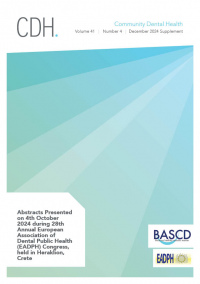doi:
Abstract
Subscribe
Back issues may be obtained from the publisher
Consider recommending subscription to your institution's library
You can view Open Access papers without a subscription.
Recent Issues
| Cover date | Vol:Issue |
| January 1970 | 41:S2 |
| December 2024 | 41:4 |
| September 2024 | 41:3 |
| June 2024 | 41:2 |
| March 2024 | 41:1 |
| January 1970 | 40:S1 |
| December 2023 | 40:4 |
| September 2023 | 40:3 |
| June 2023 | 40:2 |
 Spanish Issues
Spanish Issues
Resúmenes en español (Abstracts in Spanish)
Sign up for email alerts

 Proudly Supporting
Proudly Supporting


